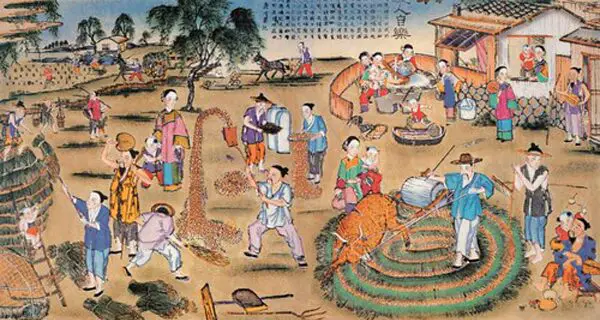Blog
History of Chinese Cuisine

History of Chinese Cuisine
China has one of the world’s oldest continuous civilizations. It is thought that some form of organized society began around 2000 B.C., and throughout the centuries, China has made significant world contributions in philosophy, religion, science, math, politics, agriculture, writing, and the arts. Confucius, whose teachings and writing still influence Chinese thought, lived during the Zhou Dynasty, about 2,500 years ago. The Confucian classics were the guide for Chinese civilization, highlighting education and family as the foundation of society. Taoists believed that people should renounce worldly ambitions and turn to nature and the Tao, the eternal force that permeates everything in nature. Buddhism has become a very powerful belief system for the Chinese. It provided a refuge in the political chaos that followed the fall of the Han Dynasty (206 B.C.–A.D. 220). By the fifth century A.D., Buddhism was widely embraced throughout China. Over the centuries, openness to new ideas fostered the emergence of many Chinese inventions and discoveries.
The ancient Silk Road has established over 2,000 years ago. It started at the Han capital of Changan (today’s Xian) and stretched west for 4,350 miles. Crossing mountains and deserts, it branched into two routes, one going through central and western Asia to the eastern shore of the Mediterranean, the other crossing the Aral and Caspian Seas to Constantinople (Turkey). From here, silk was carried on to Rome and Venice. Chinese silk and the four great Chinese inventions—paper, printing, gunpowder, and the compass—made their way to the rest of Asia and to Europe along this route. In return, merchants brought religion and the art and culture of these foreign regions to China. Trade along the route brought and enriched the northern provinces with herbs, fruits, vegetables, and spices. Coriander, sesame seeds, grapes, walnuts, peas, and garlic were imported from the west and became a hallmark of much of northern Chinese cooking.
The Chinese government has always been characterized by some form of central authority, dating as far back as the Xia Dynasty of 2200 B.C. Subsequent dynasties reinforced cultural unity and continuity for the Chinese civilization. One dynasty succeeded another through warfare, but with only occasional intrusion by forces outside of China. The lack of outside contacts allowed the Chinese to develop one culture across many regions with a strong sense of national identity. A series of emperors served as political leaders supported by well- equipped armies. The Chinese people believed their emperors ruled by “Mandate of Heaven.” These dynasties continued over the centuries until the opening of China to the West in the 1800s.
The twentieth century saw dynamic forces change the political landscape of China. Shortly after the century began, the ages-old imperial dynastic system was swept away. Along the way, the country survived occupation by foreign troops, a short-lived republican government, a failed attempt at monarchical restoration, a war against Japan, and five years of civil war. The People’s Republic of China emerged on October 1, 1949, a Communist government under the authoritarian Chairman Mao Zedong. By century’s end, global realities forced China to experiment with forms of capitalism. Over the last half-century, there has been major land and social reform, the Great Leap Forward Campaign, the Cultural Revolution, famine, the market reforms of Deng Xiaoping, and the move to put China on the world political and economic map. Through it all, Chinese culture has endured and even thrived. A strong sense of unity has held the Chinese nation together through 4,000 years. Its stable territorial boundaries, borders that defy easy penetration, culture, language, rich philosophy, and political institutions have allowed China to remain unified through dynastic changes and periodic social upheavals. The country has proved resilient and enduring.